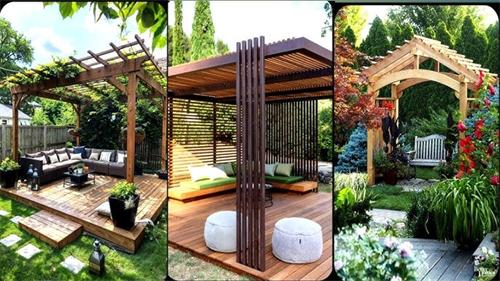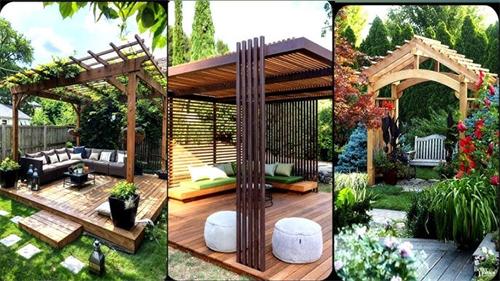
Incorporating hardscaping into garden design transforms ordinary outdoor spaces into structured, functional, and captivating retreats that blend seamlessly with plant life. Pathways guide movement and protect delicate beds while adding visual interest and defining traffic flow. Patios extend living spaces outdoors, offering versatile areas for dining, relaxation, and gatherings under the open sky. Pergolas introduce vertical allure and filtered shade, creating focal points that support climbing plants and frame garden vistas. Together, these hardscape elements elevate both the aesthetic appeal and practical utility of gardens, inviting exploration and enjoyment in every season.
Embracing Hardscaping in the Garden
Hardscaping refers to the incorporation of non-living elements—such as stone, brick, concrete, or wood—into landscape design to structure outdoor areas and provide stability underfoot. By anchoring plantings with sturdy surfaces, hardscapes form the backbone of a garden’s layout, ensuring pathways, seating areas, and architectural features withstand both foot traffic and the elements. When thoughtfully executed, these elements complement greenery rather than compete with it, striking a balance that enhances the natural beauty of plantings.
Pathways for Flow and Function
Garden pathways serve dual roles as navigational guides and design accents, channeling visitors through curated views while shielding fragile plants from inadvertent trampling. Materials range from rustic gravel—valued for affordability and drainage—to formal pavers that echo architectural styles and create crisp edges. Mulch paths offer an organic feel, softly edging display beds and lawns, though they require periodic replenishment as the organic matter decomposes. Well-placed walkways also enhance safety by preventing slips and clearly delineating zones, encouraging leisurely strolls that reveal new garden perspectives.
Designing Inviting Patios
Patios extend living spaces into the landscape, providing hard-surface areas ideal for furniture, fire pits, and planters. Whether crafted from natural stone, stamped concrete, or interlocking pavers, patios serve as versatile platforms for al fresco dining, morning coffee rituals, or evening gatherings under the stars. To integrate patios with surrounding plantings, designers often incorporate raised beds or container gardens along edges, softening hard lines with lush greenery and seasonal blooms. Proper drainage and grading ensure water runoff doesn’t pool, protecting both the patio surface and adjacent soil from erosion.
Elevating Gardens with Pergolas
Pergolas are open-roofed structures of beams and rafters that define outdoor rooms while admitting dappled sunlight. They create vertical interest, drawing the eye upward and providing support for climbers like wisteria, roses, or grapevines that soften overhead lines with foliage and blossoms. Beyond aesthetics, pergolas offer practical benefits: they delineate zones for dining, lounging, or even outdoor offices, enhancing comfort with shade and shelter from light rain. When paired with lighting or fabric drapes, pergolas become enchanting evening venues that extend garden enjoyment past sunset.
By embracing pathways, patios, and pergolas as integral components of garden design, homeowners craft outdoor sanctuaries that marry beauty with functionality. Each hardscape element not only structures space but also frames and enhances plantings, encouraging exploration and relaxation in equal measure. With thoughtful material choices, proper installation, and regular upkeep, these features stand the test of time, inviting generations to enjoy a garden that is as enduring as it is enchanting.
Recommend:

10 Must-Try Croatian Foods

Garden Oasis: Pathways, Patios, and Pergolas Unveiled

7 benefits of reducing items

Disney Magic: Staying at the Grand Floridian Resort & Spa

